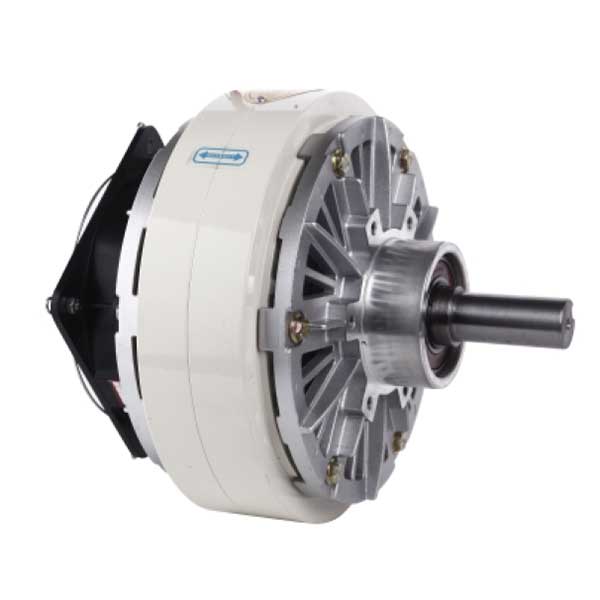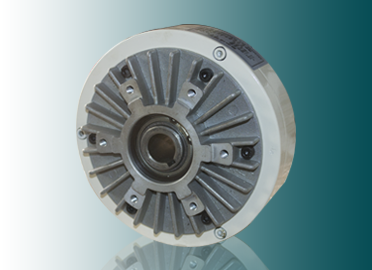Electromagnetic Principles

The magnetic particle brake uses the principle of electromagnetic induction to control the tension of the paper tape. It is mainly composed of the outer stator (yoke), the coil, the magnetic particle, the inner stator (pole shoe), the rotor, and the rotor shaft. When there is no current in the excitation coil, no electromagnetic force will occur between the outer stator, the rotor, the magnetic particle, and the inner stator, the magnetic powder between the inner rotor and the rotor is in a loose state, and there is no braking torque transmission on the rotor shaft. When a current is applied to the coil, a magnetic field occurs immediately around the coil, and the magnetic powder is magnetized by the effect of the magnetic field, so a magnetic link is formed between the rotor and the inner stator so that a connecting force occurs between the inner stator and the rotor. Since the inner stator is stationary, the rotating rotor is braked.
By adjusting the magnitude of the excitation current, the required braking torque can be obtained, and the braking torque is basically proportional to the excitation current. In addition, magnetic powder brakes have good mechanical properties. Under a certain excitation current, the connection force of the magnetic powder has little relationship with the rotational speed, and the friction coefficient between the magnetic powder and the working surface is almost the same. Therefore, it can be assumed that the braking torque is almost independent of the rotational speed. In this way, the stability and accuracy of torque control are reflected.
Cooling method
Magnetic powder brakes generally only rely on two aluminum back covers for heat dissipation. The most common types of magnetic particle brake heat dissipation are self-cooling and water-cooling. Self-cooling means that the aluminum shell cover of the magnetic particle brake itself is used to dissipate heat and the surrounding airflow environment. The water-cooled type relies on water to reduce the internal and surface temperature of the magnetic particle brake, thereby providing the application and function of the magnetic particle.
The primary purpose of these two heat dissipation methods is to reduce the temperature inside and on the surface of the magnetic particle brake and to improve the service life, function, and working efficiency of the magnetic particle brake and the magnetic particle. The service life of the magnetic particle brake is also directly related to the quality of the magnetic particle itself. The better the quality, the longer the service life of the magnetic particle and the better the function can be exerted. will drop a lot.
